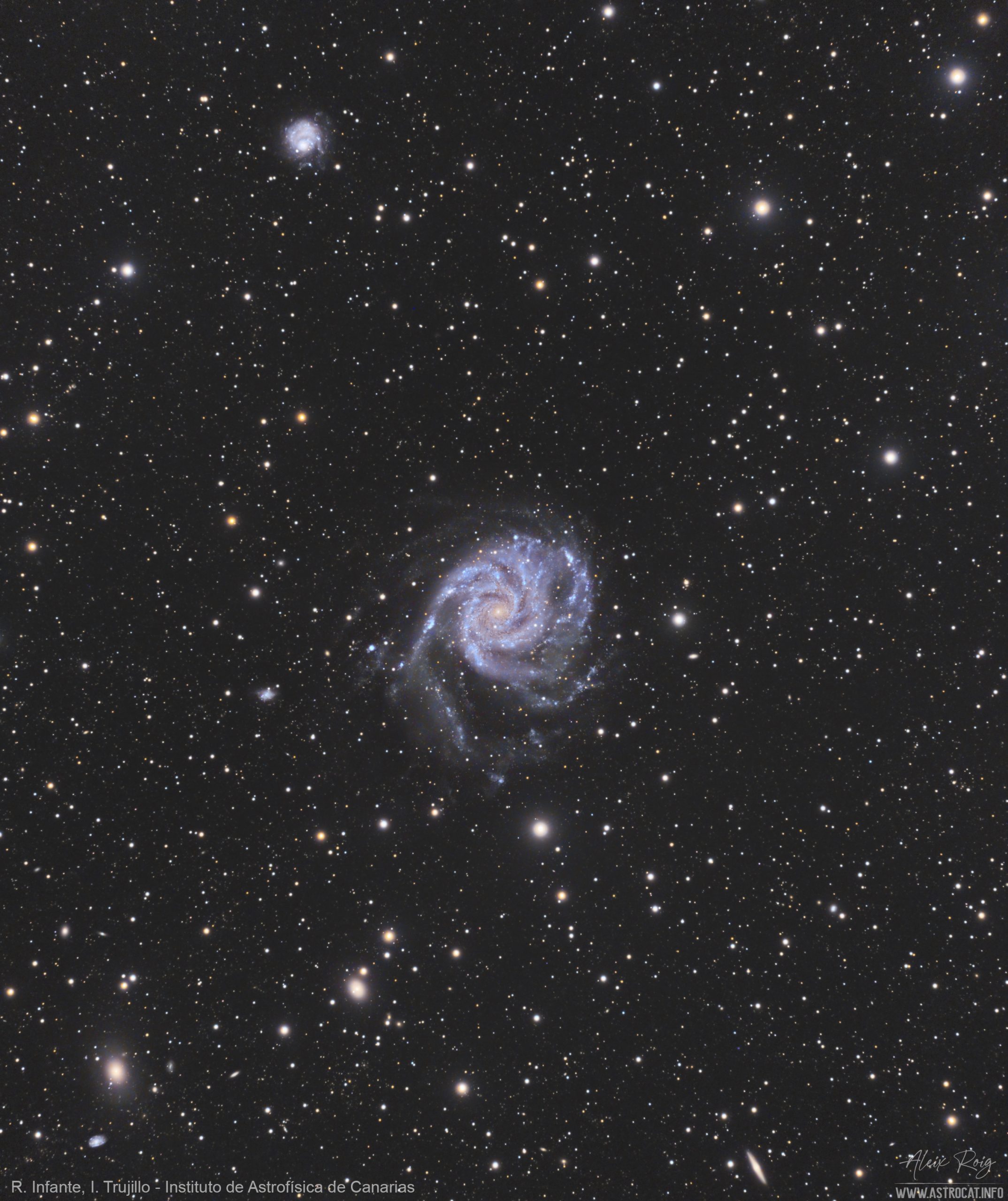This image is the result of a 2 year scientific project between professional and amateur astronomers (PRO-AM). While a lot of time and effort is spent by amateur astronomers to obtain visually appealing images of astronomical objects, only few data is taken in such a way that can be used for real science. In this work we present the current limits of amateur technology for doing low surface brightness science when a proper observation strategy and data reduction is carried out. We have observed the M101 galaxy (in luminance) for a total time of 101 hours using an amateur telescope of 8.5 cm aperture. After a professional data reduction, we reach a surface brightness level around 28 mag/arcsec2 over a field of view of 1.2 deg2. This result shows that current amateur astronomy still can compete in depth with professional telescopes when large areas are explored.
This project was presented during the 355 IAU Symposium “The Realm of the Low-Surface-Brightness Universe” that took place in Tenerife (Canary Islands, Spain) in 2019. Everything started at the podcast Coffee Break Señal y Ruido.
Image credit: Raúl Infante-Sainz, Aleix Roig & Ignacio Trujillo
Image Details
L: 101×1200″
All images at 0Gain -20ºC bin1
Calibrated with 1,500 bias, 200 darks and sky flats.
Total exposure: 101h
38’ RGB data for the color image
Equipment
FSQ85ED telescope
Mesu200 mount
ASI1600MM Pro camera with ZWO EFW 8 pos
Guiding with ASI174MC and ZWO OAG
Baader filters
Software
SGP, PHD2, APP, PIX.
Raúl Infante-Sainz, Aleix Roig & Ignacio Trujillo – Prades, Tarragona (Catalonia, Spain), 2019-2020.
NOTE:
This has been my main, and almost unique, project for over two whole seasons, 2019 and 2020. I’m very pleased with the results and for the opportunity that I have had to participate with professional astrophysicists.


